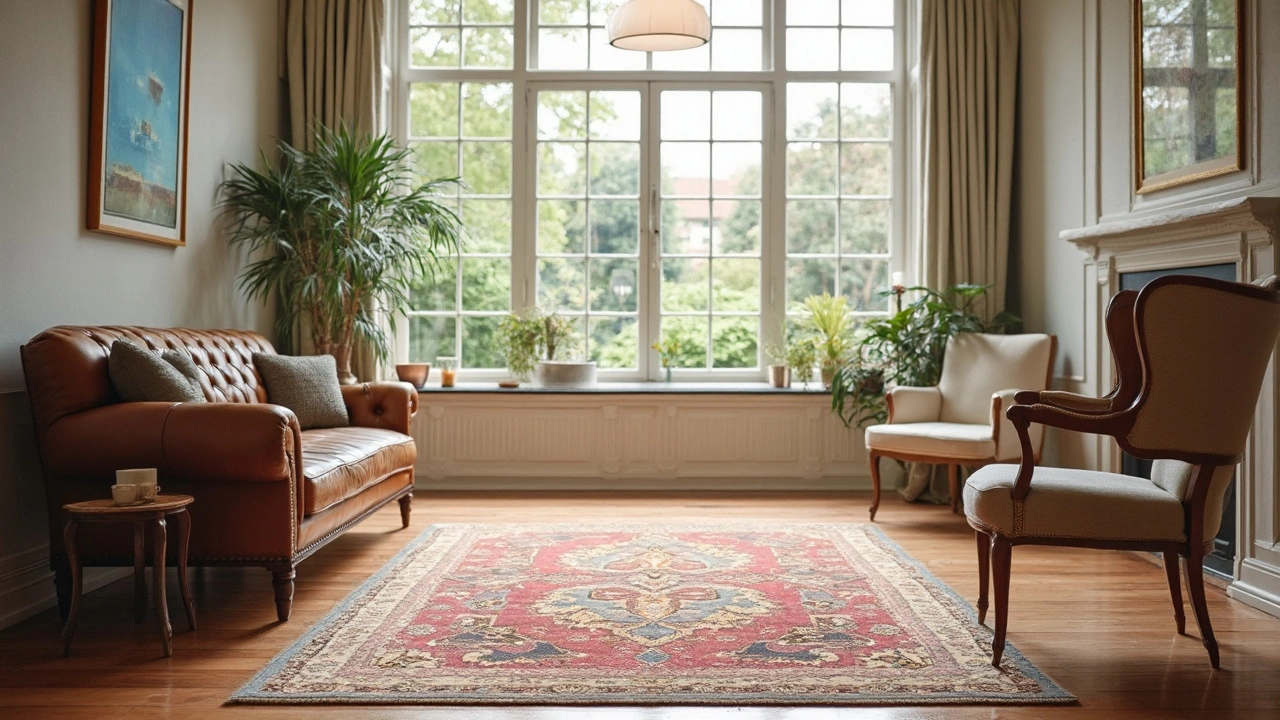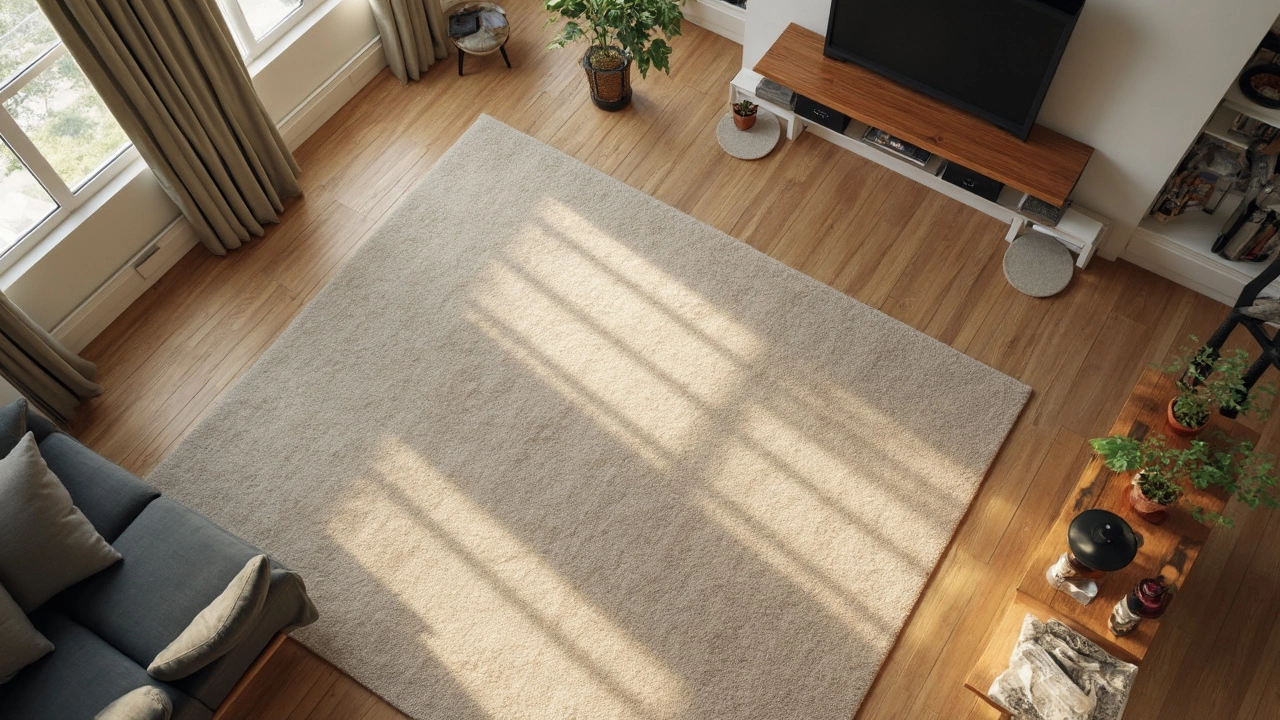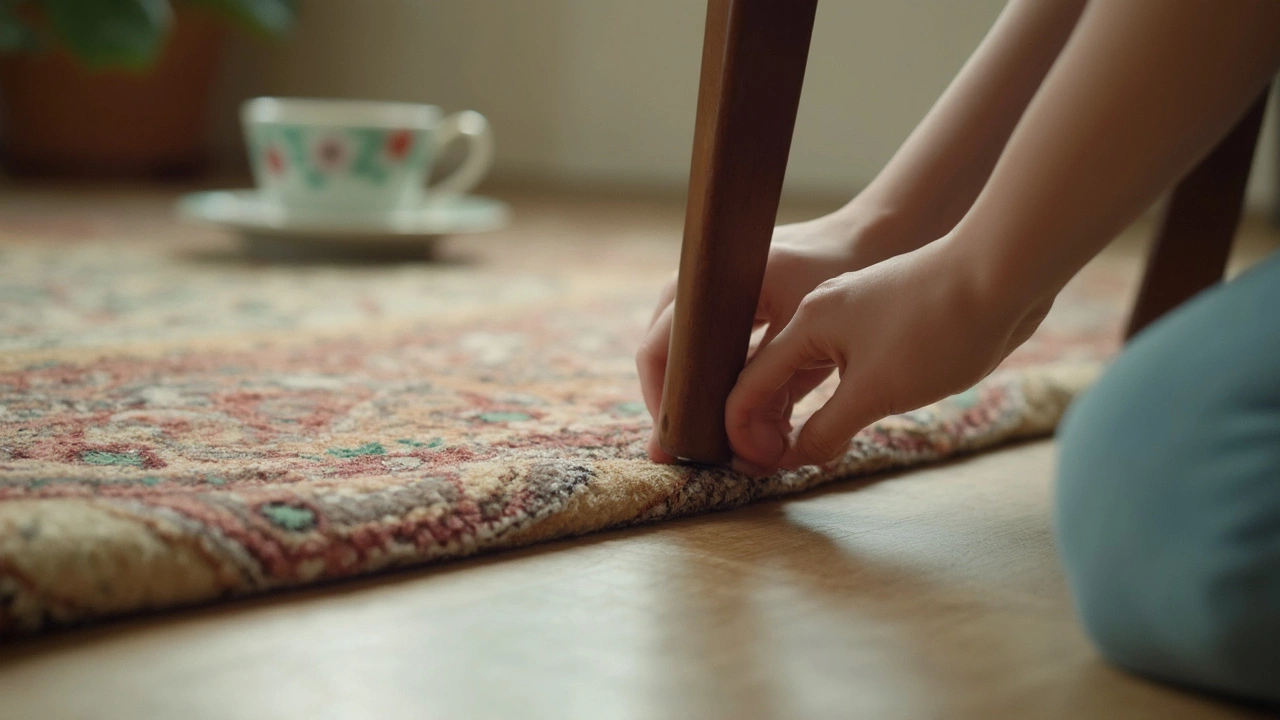Is It Okay to Put Furniture on a New Rug? Expert Tips for Rug Care and Placement

So, you’ve invested in a brand-new rug. Maybe you scored it during a flash sale, or perhaps it’s one of those spontaneous buys that seem to follow you home after a Saturday at the home store. It arrives, perfectly rolled, colors bold and fibers standing to attention. The big question instantly spins into your mind: do you dare put your heavy furniture right on top of that pristine surface? Will it flatten or mark, or will it hold up just fine? Debates about furniture-on-rug are as common as fights over the TV remote, and trust me, I hear it along with the ‘where should the sofa go’ discussion at least once a month in our house. But this isn’t just about aesthetics—it’s about the lifespan of your rug, your floor, and even your back.
The Science of Rugs and Furniture Weight
Let’s get a few things straight: rugs are not indestructible. They’re tough, sure, and some can take a beating, but they aren’t immune to pressure from those heavy couches or imposing dining tables. The dense structure of new fibers, like that thick wool rug you think is invincible, is still malleable right after unrolling. Wool, for example, is springy but not immortal. A 2020 report by the International Rug Institute found that even wool rugs start to show crushing after just two weeks with a 150-pound couch leg pressing down. Not immediate disaster, but it’s noticeable, especially on high-pile rugs.
Ever notice how rugs seem to ‘remember’ furniture legs, even after you rearrange the room? That’s pile memory. Synthetic fibers, like those in polypropylene or nylon rugs, can bounce back a little better but will eventually give in if the pressure is permanent. Think of a mattress after years with someone sleeping in one spot—it caves just a bit. With rugs, it’s the same deal. The compression comes from the direct pressure, but sunlight and humidity can make the fibers more or less likely to rebound, depending on the season and your climate.
On a more practical note, putting furniture right onto a brand-new rug can sometimes trap moisture—especially if you’ve just steam-cleaned it or unrolled it after it sat in the shipping truck during a hot June. Trapped moisture means mold risk, especially in wool or cotton rugs, which can soak up anything like a sponge. That’s the stuff that shortens a rug’s life faster than any rogue toddler with a cup of juice.
Manufacturers aren’t always on the same page, but from my own research (and asking the folks at the local warehouse), most recommend letting a new rug “breathe flat” for at least 24–48 hours before putting heavy furniture on it. Some high-end brands go as far as a week. This break-in period allows the fibers to relax, the backing to recover its intended shape, and any lingering chemical smells to air out. Basically, patience pays off. You also avoid those annoying buckles and waves that can happen when a new rug isn’t fully settled.
Now, about weight distribution—here’s where things get interesting. If you plop a massive bed frame with spindly legs onto a plush rug, you’re asking for dents. A 2022 survey by RugPadUSA showed that nearly 68% of buyers with dented rugs got them from improperly placed furniture. The heavier the furniture and the smaller the contact area (like thin metal legs), the deeper and more permanent the mark. Furniture pads and coasters can help, but only if you remember to use them before the dents show up.
| Rug Fiber | Resilience to Compression | Recommended "Breathing Time" Before Furniture |
|---|---|---|
| Wool | Good bounce, prone to lasting dents | 48–72 hours |
| Polypropylene | Excellent rebound, attracts static | 24–48 hours |
| Cotton | Absorbs moisture, moderate recovery | 48 hours |
| Silk | Terrible for heavy use, sensitive | At least 72 hours |
| Viscose/Rayon | Low resilience, crushes easily | Up to a week |

How to Place Furniture on New Rugs Without Ruining Them
Putting furniture on a new rug isn’t actually off-limits, but there’s a right way and a bunch of wrong ways. The trick is spreading the weight, protecting the fibers, and keeping movement to a minimum. Start simple: once your rug has had its alone time on the floor to flatten and air out, check for warping or lingering creases. The flatter the rug, the less likely it is to bunch up once the furniture is added. This makes a big difference, especially with cheaper synthetic rugs that love to curl at the corners.
Next, invest in proper rug pads—not those flimsy mesh ones you find in the discount aisle, but a dense felt or rubber pad that adds cushioning. Not only does this save your wood floors from scratches, but it also acts like a shock absorber, spreading the weight and easing the pressure on fibers. I can’t count the number of times adding a quality rug pad made the difference between deep dents and a rug that still looks good after five years.
Now, don’t just shove the couch back onto the rug and call it a day. Use furniture coasters or pads under each leg if your furniture is particularly heavy or has sharp corners or thin legs. These little discs cost almost nothing and prevent the dramatic pin-prick dents that ruin a rug’s shape. Round pads work for round legs, squares for squares—just match the shapes.
Here’s a step-by-step playbook I use whenever I get a new rug at home:
- Unroll the rug and let it rest for at least 48 hours (don’t skip—your future self will thank you).
- If it’s humid or you had it cleaned, make sure it’s totally dry before any furniture touch-down.
- Lay a rug pad underneath—make sure it’s the right size so the edges of your rug don’t curl up.
- Line up the rug exactly how you want it—adjust now, not after the sofa’s in place.
- Add coasters under furniture legs, especially for heavier pieces like beds, bookcases, or tables.
- Place furniture gently, sliding it instead of dropping it if possible. Rugs hate sudden force.
- Finally, check after a week for any new dents or bunching, and shift the furniture a couple of inches if you notice a problem spot.
Don’t leave rugs under permanent, unmoving pressure for years if you want them looking sharp. Rotating the rug every six months spreads any wear and lets the pile “breathe.” If you do find a persistent dent, holding a steam iron a couple inches above the spot and fluffing it immediately often works wonders—just make sure your rug’s material can handle the heat.
One more tip: avoid putting the whole piece of furniture off the rug and leaving just the legs on. That makes things tip and bunch, and the rug’s edge wears out fast. If the room’s big enough, the best look is when all the main furniture sits completely on the rug, or at least the front legs. Interior designers swear by this trick—makes the place look bigger and far more pulled together.

The Long View: Protecting Rugs for Years of Use
So, is it a crime to put your favorite armchair on your new rug? Not if you go about it the right way. The truth is, most rugs these days are designed to handle some furniture action—what they don’t love is sudden weight, sharp edges, and long periods of pressure in the same spot. Watch for high-traffic areas too. If your rug sits in the path of kids running between the sofa and fridge, you’ll see wear no matter what’s on top, so choose placement wisely.
If you’re like me and swap out rugs for different seasons, storing them the right way matters just as much. Rolling a rug tightly (after vacuuming both sides) and keeping it in a climate-controlled space keeps those fibers fresh. And when re-rolling a rug with noticeable dents, put a little padding (rolled towel works) under the worst spots—it helps them spring back, or at least keeps the marks from getting worse during storage.
Common rug placement mistakes go way beyond just furniture pressure. Putting a new rug in direct sunlight can fade the colors surprisingly fast—an average area wool rug can lose up to 20% of its color clarity after just two years in a sunny room, according to a 2024 market survey by HomeTextilesFirst. Window treatments or shifting the rug every couple of months helps spread any sun damage. Avoid wall-to-wall rug coverage unless you really know what you’re doing, since it can trap dirt and moisture, turning your beautiful investment into a dust sponge.
Vacuuming habits matter too. Use the bare floor setting (no beater bar), or for more delicate rugs, just shake outside and hand-vacuum any problem areas. Heavy rollers on older, fragile rugs can do instant damage. If you’ve ever seen what a robotic vacuum can do to a hand-knotted fringed rug—yeah, don’t risk it.
And let’s not pretend food and drink accidents won’t happen. The trick is acting fast—blot, don’t rub, and avoid those high-alkaline carpet spot removers unless the fiber can take it. Wool, silk, and viscose are all sensitive to harsh cleaners. I’ve messed up exactly one white, fluffy area rug so badly that even Leona winced, and trust me, nothing hides a cranberry juice stain on pale hand-woven cotton.
If you want that new rug looking good for years—even with your heaviest furniture—just remember: give it time to breathe at first, spread out the weight, and don’t let bad habits creep in. Rotate, pad, and protect. You’ll get more mileage, more style, and far fewer headaches than if you just go for it with no prep. After all, a rug isn’t just there to sit under your feet. It’s got a job to do, and with a little attention, it’ll keep your room looking sharp and feeling homey for years to come.